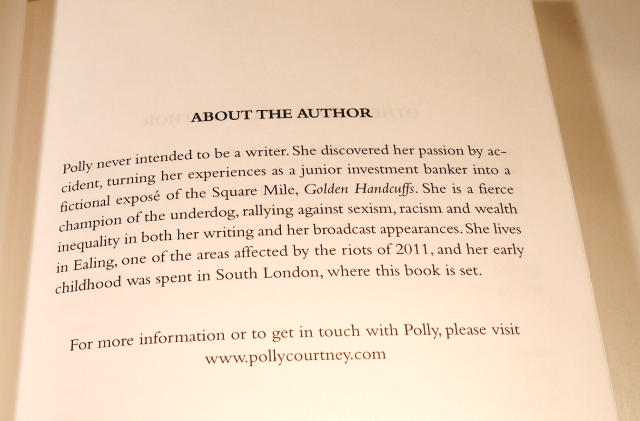Writers are observant people - right? That's why we write good books, because we notice the little things like the shopkeeper's nicotine-stained fingers, or the puff of white smoke on the horizon.

Writers are observant people - right? That's why we write good books, because we notice the little things like the shopkeeper's nicotine-stained fingers, or the puff of white smoke on the horizon.
Well, this is a fortunate trait when it comes to getting your book on the shelves, because frankly, the best way to publish is to replicate what the traditional publishers do - with a few improvements.
I'm assuming you've got a final draft of your book. In addition, you need your back-of-book blurb, your 'back matter' and your 'front matter'.
Your 'blurb' is what goes on the back of the book. It's also the text that gets used on all the online retail sites like Amazon. It needs to entice people to crack open your book - that's all. It's a taster. A teaser. Don't try and summarise everything that happens in your book. It's totally fine to leave lots out. In fact, all you really need to do is identify the premise of the book, give a flavour of the theme and/or style, and leave readers gagging for more. As I say in my video, self-publishing is not about doing everything yourself. You'll get a much better result if you collaborate with others along the way. This goes for cover design, editing and everything else, including blurb-writing. Get a friend to help - preferably someone who works in marketing, because that's what this is.
The 'front matter' consists of all those pages you see at the front of a book before the narrative begins. Use your powers of observation; see what these pages look like in other books you have at home, or in the shop. The same goes for 'back matter'. A quick tip here - and this is something that many publishers don't think to do: Make sure the first thing your reader sees when he/she gets to the end of the book is a list of any other books you've written (or you're writing) and a website link for them to register their interest. This way, you'll catch them when they're dying to read more of your stuff. If they drop their email address into your website, you'll be able to alert them when your next book comes out. This is very important!
If you're planning a paperback edition, you need to get your pages typeset. I don't recommend doing this yourself, but if you've got the skills and software, go ahead. Otherwise, a typesetter will set you back about £100 for a full-length novel. (There are a few here, or the Alliance of Independent Authors lists a number of vetted professionals.) You might want to use a publishing house for this, as well as the printing and distribution. I use Matador, but there are a number of options. The DIY route involves uploading straight to Amazon using their print-on-demand Createspace offering, which is pretty much free and (if you tick the box) can offer distribution to all online retailers, not just Amazon.
Everyone should have an ebook. The only exceptions might be coffee table photographic books or those with lots of visuals, but for books that are mainly words, you need an ebook!
Making an ebook is just a question of converting the file you used to write the book - usually Word or similar - into a new format. There are various software programmes out there to do this, such as Calibre, or you could pay someone to do it for you. Beware: Many companies will charge up-front and then charge you more to correct any formatting errors that will inevitably have crept into the first conversion. Doing it yourself is free and allows you to convert as many times as you like, until it's perfect - and it must be perfect! Check it a hundred times. Get ebook-reading friends to check it too. There's bound to be a random blank page in there somewhere, or strange spacing between words. These things happen.
Your choice of publishing partner(s) and formats will depend on your book, your likely readers, your budget and your aptitude for doing things yourself. These days, it's possible to do this stage for almost zero up-front cost, which is great because it means you can invest your money in the things that really matter: editing and cover design.
So, that's how to get your book on the shelves. Next time, I'll be talking about getting your book flying off the shelves in my post on Getting Press Coverage.
Polly Courtney is the author of six novels, both self-published and traditionally published. In 2011, she walked out on her publisher, HarperCollins, in protest at the chick-lit branding of her books. She is currently working on the film adaptation of her latest novel, Feral Youth - the story of the London Riots through the eyes of a 15-year-old girl. She is a firm advocate of self-publishing, but only when it's done well.
Comments